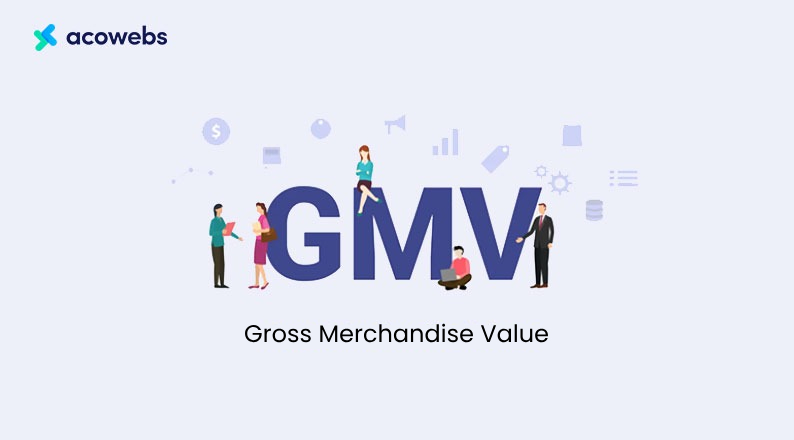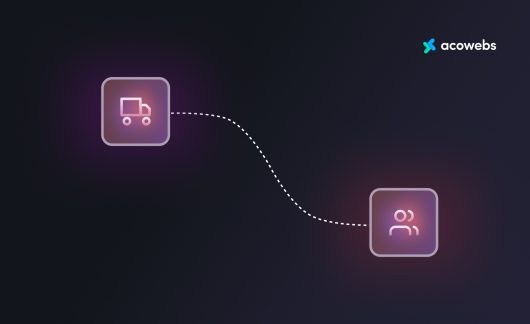The success of a consumer goods brand depends on tracking and optimizing the appropriate metrics.
Knowing which data to monitor will help you optimize your ad spend, decide better how much inventory to buy, and measure the profitability and performance of your marketing initiatives.
A crucial indicator to pay attention to is gross merchandise value (GMV). It’s an essential Financial metric for monitoring growth, and when combined with other critical metrics, it can provide you with a clear picture of your brand’s health.
Understanding how to increase your GMV is crucial whether you manage an eCommerce website or work in retail. This essential number reveals the overall worth of the things you have sold over a specific period.
Keep this metric in mind when considering how to boost sales and strengthen your company’s bottom line.
Why is Gross Merchandise Value significant to your eCommerce business? What is it? In this article, we define GMV, explain how to calculate it, and offer tips on how to increase your GMV.
What Is GMV (Gross Merchandise Value)
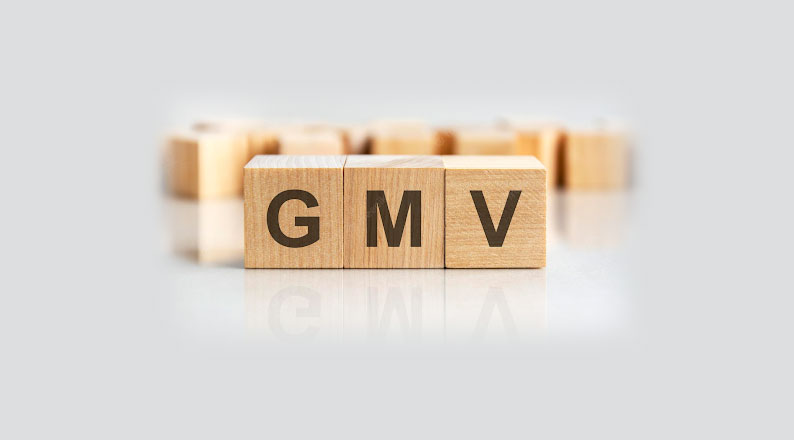
Gross merchandise value (GMV) refers to the total cost of all goods exchanged through a customer-to-customer (C2C) channel within a given period. It serves as a measure of business growth or the level of eCommerce platform’s usage in terms of selling goods belonging to third parties.
Because the revenue from an e-commerce site depends on the gross merchandise sold and the fees collected, GMV is frequently used to assess the business health of the site.
It is most helpful when compared over time, such as comparing the value of the current quarter to that of the prior quarter. eCommerce GMV essentially counts all purchases made through a platform for a specific period, such as a quarter or year.
Your GMV enables you to track the overall sales for your e-commerce business, whether it is new or well-established. Your revenue increases each time a customer wraps up the checkout procedure. This sales revenue keeps rising as an increasing number of transactions take place.
Although they are different, revenue and GMV are frequently used interchangeably. GMV is divided into parts, not as a whole.
For instance, if you sell a product on Shopify for $200 but your production expenses are $50, your gross merchandise value is $200, but your revenue is just $100.
In other words, gross merchandise value is the total cost of all the items sold through an online store, excluding any costs associated with those items. The GMV number does not include returns or refunds.
How To Calculate Your GMV
The gross merchandise value (GMV) is determined before any fees or expenses are subtracted. It offers data that a retail company can utilize to gauge growth, frequently on a monthly or annual basis.
A retail business can typically compute the gross value of all recent sales, although it may be necessary to exclude goods returns from this figure to produce an accurate computation.
Here’s a fast formula to Calculate the gross merchandise value (GMV):
Gross merchandise value ⁼ The sales price of goods × the quantity sold.
Your GMV would be $2,000 if you sold 10 products for each $200 you charged. This value is also referred to as gross income or overall sales.
GMV is expressed in dollars. Most e-commerce businesses used statistics instead of revenue or sales data, particularly when they first started to gain popularity.
Ultimately, it was universally accepted that using gross merchandise value as a stand-alone benchmark or in place of other indicators was unsuccessful.
GMV is frequently used by e-commerce businesses today, in addition to other sales and revenue data, to help them determine how their business is doing and expanding.
Importance of GMV
Knowing how to increase your GMV is crucial because it gives you an idea of how financially successful your e-commerce firm has been.
You can determine how effectively your strategies function if your GMV expands reasonably (which may vary depending on your market field).
Below are three reasons why it is important to calculate your gross merchandise value;
1. It Provides a Basis for Comparison
GMV should be used as a benchmark when comparing various timeframes and measurements.
Think about your gross sales (as reported by GMV) compared to your net profits, for instance (the amount of GMV you get to retain as a business without paying for advertising costs, refunds, shipping, labor, and the like).
2. It Gives Information About Sales Performance
By counting the number of things your business sells at a certain price, you obtain the hard data and the capacity to extrapolate further information from it.
You may view the revenue generated by your e-commerce website and any other elements that might have affected your GMV.
For instance, think about whether you made any changes to your marketing from one week to the next that would have attracted more customers and raised the GMV.
3. GMV Is an Important Metric
Gross merchandise value is a useful measure to get a sense of how many transactions your firm made during a certain period and what those transactions meant for your organization.
Instead of evaluating your company’s financial performance, it serves a superior purpose as one of many criteria.
How To Increase Your GMV
A steady increase in gross merchandise value indicates that you are selling more or more expensive goods. That’s fantastic since rising gross merchandise value results in rising profits.
Your gross merchandise value can be raised by implementing a number of tactics if your business analysis reveals areas for development. Here are a few tactics on how to increase your GMV ;
1. Provide Free Shipping
Giving away free delivery is an excellent strategy to raise the gross merchandise value of your goods. When buyers know that shipping costs will be added to their order, they may make fewer purchases.
Customers are more likely to buy more when they learn they’ll get free shipping for their area or over a particular cart value. Using this retail model will increase GMV.
Free shipping does not have to come at the expense of thinner profit margins. It can benefit both parties.
In cases where orders exceed a particular amount, 80% of buyers anticipate free shipment. Setting the appropriate threshold ensures you meet your customers’ expectations and make enough money to pay for shipping.
The most popular strategy to raise gross merchandise value for the company is to offer free delivery based on the number of items sold or the total sales value. Promote this message throughout your online store to persuade clients to raise their qualifying average order value.
For example, Velour offers free shipping on purchases of $50 or more. Velour’s website contains messages encouraging customers to increase their cart value to $50 to receive free shipping.

Velour’s Free Shipping on Orders Above $50 – Image Credit: Velour Beauty
2. Cross-Selling
A fantastic strategy to increase your gross merchandise value and save on advertising expenses is to suggest complementary products to customers interested in certain things.
Directing customers to things they might genuinely need enhances the customer’s shopping experience and raises the average order value.
A branded monitoring page can further enhance the customer’s buying experience. Include a tracking page to keep visitors on your e-commerce website for longer. Suggest related products or tempting offers to boost gross sales on your company monitoring page.
It also lowers the price you pay to acquire new customers. It is always less expensive to increase an existing customer’s overall transaction value than to find new clients.
Casper is an example of a brand that Cross-sell products. For instance, while purchasing a mattress, you’ll undoubtedly want to get new bedding and pillows.
All mattress-related items are listed at the bottom of the mattress product page under the catchy heading “Build Your Bedroom.”
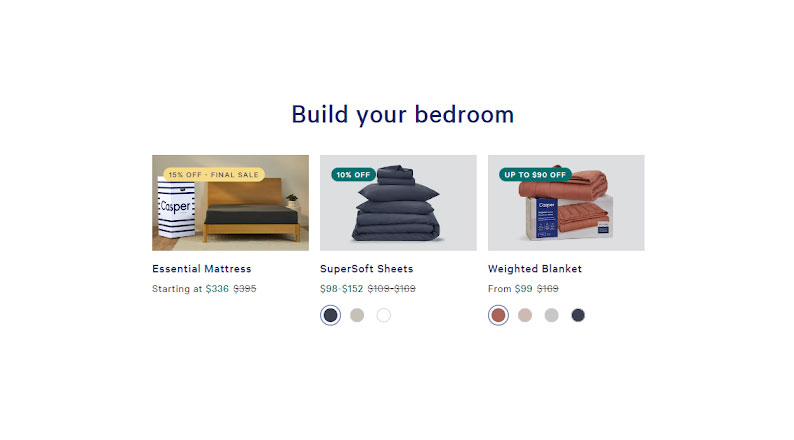
Casper Cross Selling Bedroom Products – Image Credit: Casper
3. Product Bundling
You are practicing product bundling when you package complementary products as a set of items that may be bought together at a discount or for less money than when done separately.
As an upsell or cross-sell, you might group related products. As an alternative, you might put together a specific product bundle that is either wrapped or packaged in a gift box.
One online retailer that has taken advantage of the opportunity for product bundling is Harry’s. Harry’s utilizes product bundling effectively. Shampoos are available separately and as a set from the men’s grooming company.
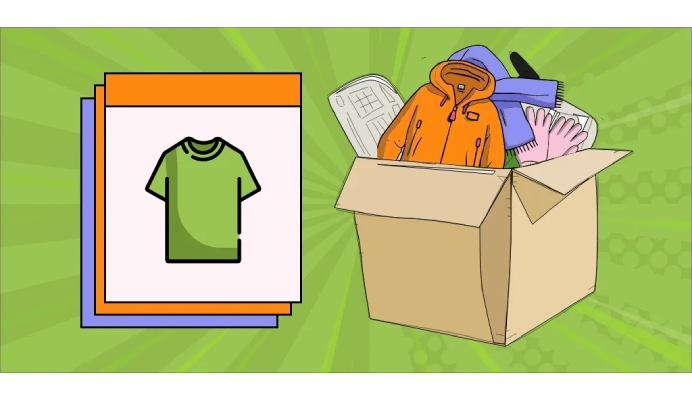
Bundling slow-moving inventory items with high-demand items is a terrific idea when you have a bunch of them. By doing that, you can revitalize your outdated or overstocked product and boost sales.
Even when customers probably spent more money than they intended to, giving packages can help them feel like they received a fantastic bargain.
4. Offering Discounts
Offering a discount based on the order amount is an excellent approach to boost gross merchandise value, much like providing free shipping.
Volume discounts are advantageous because it can be challenging to compete with reduced pricing.
For instance, you receive 10% off your order if you spend above $100. A person planning to spend $80 might end up spending $100 due to this.
Your GMV will be higher, and the consumer will receive more at a lower price if they spend an additional $10 to obtain $20 worth of stuff. In this manner, volume discounts assist you in boosting GMV without lowering gross margin.
5. Gift Cards
Gift cards are a terrific method for your clients to spread the word about your business and to give someone else money to spend.
Although the gift card may have a fixed cash value, the recipient is more inclined to spend extra at the time of purchase because they received the gift card as a present.
Barefaced Beauty is an example of a brand that uses gift cards.

Barefaced Beauty Gift Card – Image Credit: Barefaced Beauty
6. Offer First-Rate Customer Service
Statistics show that 95% of consumers claim that a brand’s customer service influences their decision to purchase it and their loyalty to it.
These are just a few of the many important customer service data, but they are plenty to demonstrate how your bottom line is impacted by providing exceptional customer service.
You can earn clients’ trust and confidence to purchase from you by responding to their inquiries on social media and in real-time chat.
You can generate new sales when you take the initiative to handle return requests. Your consumer might prefer an exchange over a refund if they are happy with it.
This action increases consumer trust in your brand and motivates them to shop at your establishment again.
You encourage clients to do business with you in the long run by providing outstanding customer service.
7. Implement a Loyalty Program
Implementing a loyalty program can assist in motivating customers to make subsequent purchases and return visits.
The average amount spent can be raised over time by giving each dollar a point value and rewarding clients when they reach particular point thresholds.
More than advertisements and marketing materials, customers put their trust in relatives and friends. Customers are encouraged to refer others in exchange for prizes through a loyalty and rewards program. Over time, this raises your GMV.
You don’t need a comprehensive rewards scheme like Amazon’s, which necessitates keeping track of reward point balances. A straightforward referral campaign can be as successful.
The points-based benefits package at Sephora, which enables users to buy gifts from their rewards bazaar or trial products, is a wonderful example.

Sephora’s Loyalty Reward Bazaar – Image Credit: Sephora
8. Introduce Personalized Products
Personalized goods are a fantastic method to raise your company’s gross merchandise value (GMV).
Each customer can feel as though they are receiving a one-of-a-kind item that was specially produced for them by delivering things that can be personalized with their name, initials, uploaded files, or other personal characteristics.
As shoppers are more inclined to make a purchase if they believe it is personalized for them, doing this can help raise your conversion rate. Furthermore, because customized products are frequently more expensive, you can charge more for them when you sell them.
Not all online retailers can personalize their products, but if you’re seeking ways to increase your company’s profits, think about providing unique products to your customers.
Other eCommerce Key Metrics
You may largely analyze your company’s financial health by determining your gross merchandise value (GMV). Still, there are other crucial indicators to take into account as well.
The following eCommerce indicators can be monitored with gross merchandise value to provide a complete picture of your brand’s performance;
1. Average Order Value
While knowing how many items a particular customer buys from your e-commerce site is important, calculating the average amount of money you can anticipate from all potential customers can prove to be an even more insightful metric.
You can more accurately predict the behavior of a larger range of customers by monitoring average order value (AOV) than you can with gross merchandise value alone.
2. Conversion Rate
GMV tells you how much you have sold, but it cannot provide information on the time it takes to convert a prospective customer into a paying customer.
Your conversion rate (CVR) will help you determine what it will take to persuade a new customer to boost your GMV over a specific period.
3. Cost of Customer Acquisition
Getting more customers who will buy your items typically has a cost. The overall cost of acquiring a single new client for your company’s marketing and advertising efforts is your customer acquisition cost (CAC).
As an alternative, your churn rate reveals how frequently you can anticipate losing clients over time. These measures illustrate how several elements may reduce your gross merchandise value, leaving you with less revenue than you started with.
4. Client Lifetime Value
While calculating gross revenues gives you a high-level view of your company, focusing on the value that particular clients contribute might be even more helpful.
You can base your business strategy on the customers you are most confident in by evaluating the customer lifetime value (CLV).
5. Net Product Value
Net merchandise value (NMV), a close relative of GMV, subtracts from gross revenue to determine the net sales profit margin.
Your NMV displays how much profit you’ll have left over after paying all your operating expenses and spending a portion of your GMV.
However, relying on GMV alone for marketing evaluation has its own downsides, too. A high Gross Merchandise Value does not equal high profits because the gross sales value doesn’t consider discounts, returns, and cancellations. Customer loyalty and satisfaction are crucial factors in sustaining the company’s success for a long period.
GMV only provides limited insight with which the profit and overall business health cannot be determined. Other Key Performance Indicators such as Net Profit Margin, Return on investment (ROI), Customer acquisition cost, Customer Lifetime Value (LTV), etc., and satisfaction metrics like Net Promoter Score (NPS), Customer Effort Score (CES), Customer Health Score, Customer Satisfaction Score (CSAT), etc., should be considered alongside GMV to get a comprehensive understanding of the potential growth of the business.
Conclusion
Use a variety of ways to raise your gross merchandise value rather than depending on one. This practice ensures effort diversity and makes it easier to get real results more quickly.
Implementing these techniques on how to enhance your GMV eCommerce may seem overwhelming if you’re unfamiliar with business performance. However, the task may be simpler by concentrating on the company’s financial measurements.
Additionally, maintaining first-rate customer service when you receive more orders differs from increasing gross merchandise value. Your bottom line will eventually increase if you put your clients first and give them an amazing shopping experience.
GMV should therefore be used in conjunction with other metrics to offer you a complete view of business success, even though it will be an excellent metric to evaluate total sales value and whether this is improving.
It is crucial to track your growth each month to identify what you could be doing properly or wrong.
Acowebs are the developers of the WooCommerce Deposits– Partial Payments plugin that helps the customers pay a fixed price, percentage, partial payment, or deposits, for the products purchased from your Woocommerce store. It also has developed various other plugins like WooCommerce Currency Switcher, the multi-currency converter plugin that shows prices in the user’s local currency and helps customers connect to desired products faster. It helps customers quickly compare products and make a judgment easily.












 Login
Login
 Cart
Cart